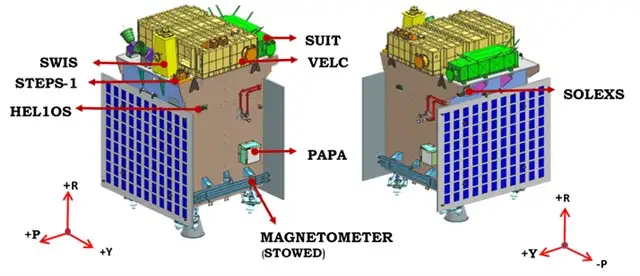The Indian Space Research Organisation (ISRO) is once again poised to make history with the upcoming launch of the Aditya L1 mission. Scheduled for liftoff on September 2nd, 20XX, this ambitious mission is aimed at unravelling the mysteries of our closest star, the Sun. The mission’s name, “Aditya,” is derived from the Sanskrit word for the Sun and reflects ISRO’s dedication to advancing our understanding of the solar environment.
The Aditya L1 mission has a multifaceted set of objectives, all of which revolve around studying various aspects of the Sun and its influence on space weather. The primary goals of the mission include:
Studying the Solar Corona:
The solar corona is the Sun’s outermost layer, extending millions of kilometers into space. It’s much hotter than the Sun’s surface, known as the photosphere, which is counterintuitive. The Aditya L1 mission aims to uncover the reasons behind this temperature difference and study the coronal magnetic fields that play a crucial role in shaping its structure. By observing specific emissions in visible and ultraviolet light using the Visible Emission Line Coronagraph (VELC) instrument, scientists hope to understand the mechanisms that heat the corona and drive the solar wind.
Measuring Solar Energetic Particles:
Solar flares, which are intense bursts of energy and light, are often accompanied by the release of high-energy particles known as solar energetic particles (SEPs). These particles can pose risks to astronauts in space and can interfere with the operation of satellites and other technology. Aditya L1’s instruments, particularly the Aditya Solar Wind Particle Experiment (ASPEX), will measure the properties of these particles, aiding in the prediction and mitigation of potential impacts on both space missions and Earth-based technology.
Understanding Coronal Mass Ejections (CMEs):
Coronal Mass Ejections are massive eruptions of plasma and magnetic fields from the Sun. When these charged particles reach Earth, they can disrupt the planet’s magnetosphere and cause geomagnetic storms. These storms have the potential to affect power grids, communication systems, and even satellite operations. By closely observing the processes that lead to CMEs, Aditya L1 will provide valuable insights that can improve our ability to forecast and manage space weather events, ultimately minimizing their impact on technology and infrastructure.
Studying the Chromosphere:
The chromosphere is a region of the Sun’s atmosphere situated just above the photosphere. It plays a key role in various solar phenomena, including the generation of light and heat. The Solar Ultraviolet Imaging Telescope (SUIT) onboard Aditya L1 will capture images of the Sun’s chromosphere in near-ultraviolet and far-ultraviolet wavelengths. By studying the dynamics and behaviour of this layer, scientists hope to gain insights into the processes that drive solar variability and influence the Sun’s overall behaviour.
Aditya L1 is equipped with a suite of sophisticated instruments to achieve its scientific goals:
Visible Emission Line Coronagraph (VELC):
VELC will observe the corona using specific visible and ultraviolet emissions. It will help in understanding the solar wind acceleration and the properties of the coronal plasma.
Solar Ultraviolet Imaging Telescope (SUIT):
SUIT will observe the Sun’s chromosphere and corona in near-ultraviolet and far-ultraviolet wavelengths. This will provide vital data about the temperature and dynamics of these regions.
Aditya Solar Wind Particle Experiment (ASPEX):
ASPEX is designed to measure the variations in the solar wind velocity and composition. This data is essential for understanding the solar wind’s interaction with the Earth’s magnetosphere.
The Aditya L1 mission holds tremendous significance for both solar and space science. By studying the Sun’s behavior and its impact on space weather, scientists can make more accurate predictions about solar activity and its potential effects on Earth’s technological infrastructure. Improved space weather forecasts can help protect satellites, power grids, and communication systems from potential disruptions caused by solar events.
Furthermore, the data gathered by Aditya L1 will contribute to the broader field of astrophysics. Understanding the processes that govern the Sun’s behavior can provide insights into similar phenomena observed in other stars across the universe.
As we eagerly await the launch of the Aditya L1 mission on September 2nd, scientists, space enthusiasts, and the general public alike are looking forward to the wealth of knowledge and discoveries that this mission promises to deliver. ISRO’s dedication to pushing the boundaries of space exploration continues to inspire and pave the way for future advancements in our understanding of the cosmos.

